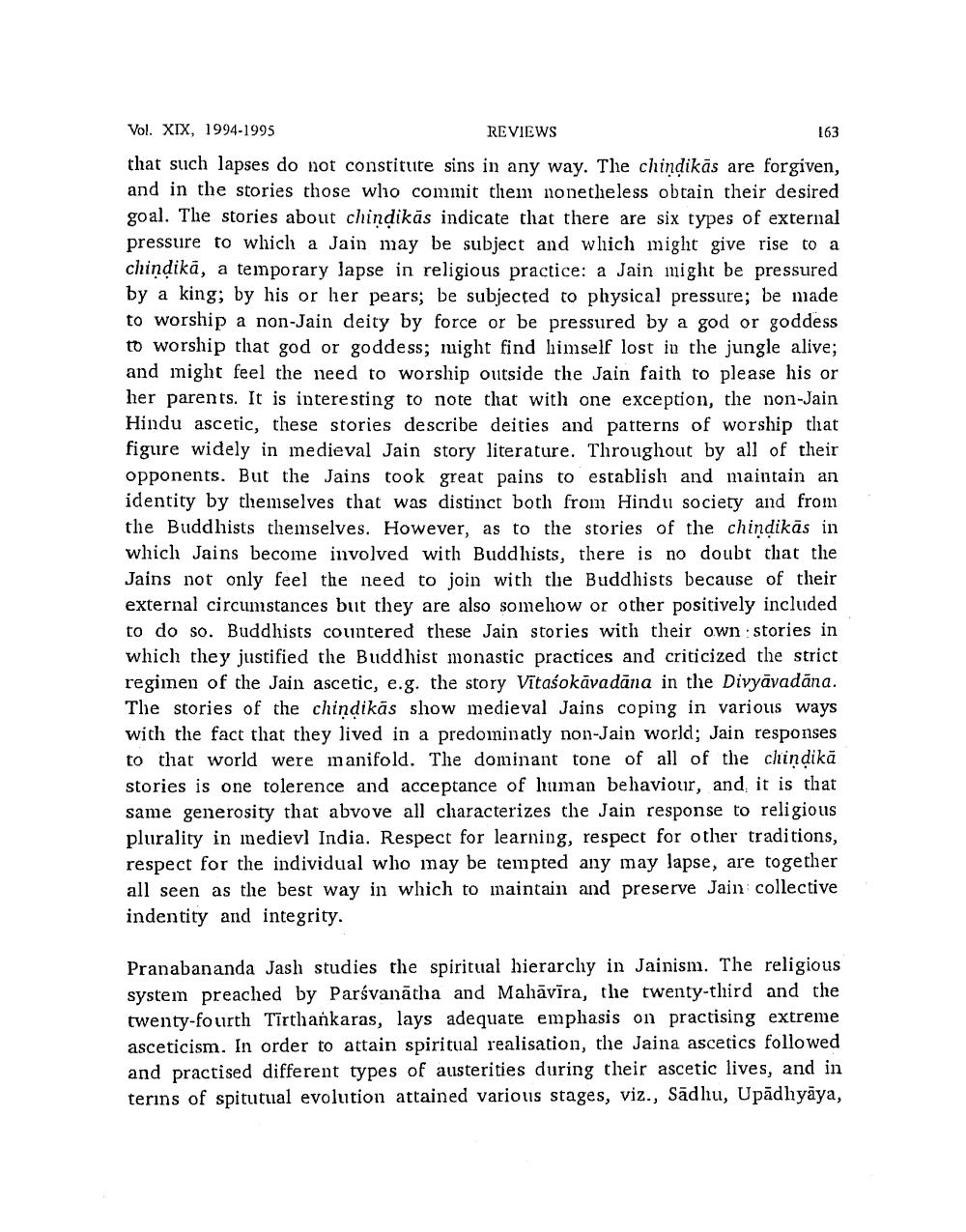________________
Vol. XIX, 1994-1995
REVIEWS
163
that such lapses do not constitute sins in any way. The chindikās are forgiven, and in the stories those who commit them nonetheless obtain their desired goal. The stories about chindikās indicate that there are six types of external pressure to which a Jain may be subject and which might give rise to a chindikā, a temporary lapse in religious practice: a Jain might be pressured by a king; by his or her pears; be subjected to physical pressure; be made to worship a non-Jain deity by force or be pressured by a god or goddess to worship that god or goddess; might find himself lost in the jungle alive; and might feel the need to worship outside the Jain faith to please his or her parents. It is interesting to note that with one exception, the non-Jain Hindu ascetic, these stories describe deities and patterns of worship that figure widely in inedieval Jain story literature. Throughout by all of their opponents. But the Jains took great pains to establish and maintain an identity by themselves that was distinct both from Hindu society and from the Buddhists themselves. However, as to the stories of the chindikās in which Jains become involved with Buddhists, there is no doubt that the Jains not only feel the need to join with the Buddhists because of their external circumstances but they are also somehow or other positively included to do so. Buddhists countered these Jain stories with their own stories in which they justified the Buddhist monastic practices and criticized the strict regimen of the Jain ascetic, e.g. the story Vītaśokāvadāna in the Divyāvadāna. The stories of the chindikās show medieval Jains coping in various ways with the fact that they lived in a predominatly non-Jain world; Jain responses to that world were manifold. The dominant tone of all of the chindikā stories is one tolerence and acceptance of human behaviour, and, it is that same generosity that abvove all characterizes the Jain response to religious plurality in mediev] India. Respect for learning, respect for other traditions, respect for the individual who inay be tempted any may lapse, are together all seen as the best way in which to maintain and preserve Jain collective indentity and integrity.
Pranabananda Jash studies the spiritual hierarchy in Jainism. The religious system preached by Parávanātha and Mahāvīra, the twenty-third and the twenty-fourth Tīrth ankaras, lays adequate emphasis on practising extreme asceticism. In order to attain spiritual realisation, the Jaina ascetics followed and practised different types of austerities during their ascetic lives, and in terins of spitutual evolution attained various stages, viz., Sadhu, Upādhyāya,




